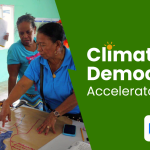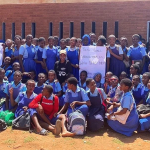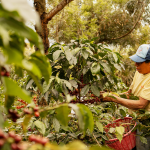Compiled by By Happy Tarumadevyanto | Independent Consultant | Environmental Asia | happy.devyanto@environmental.asia
Small farmers face many challenges. In the midst of globalization, it is important for these farmers to understand the situation and conditions so that they can survive.
Regarding small farmers, there are categories of farmers as follow:
sharecroppers and landowners.
Sharecroppers The socio-economic conditions faced by sharecroppers are relatively poor. Many villagers who are living around the forest do not have land and depend entirely on forest resources. Usually they farm with an intercropping system and share the results with the landowner [forest manager].
Landowners have more freedom to manage their land.
The current of globalization has made them also have to be able to understand that their life needs are not only for their own benefit, but also need to have competitiveness in order to compete with producers who have larger business scales.
Small Holders or small farmer groups face global challenges in
- Developing competitive farming system to meet their daily living needs amidst the other needs that enable them to survive in their life.
- Marketing their products to broader market domestically and internationally. Marketing either agricultural or forestry products from farmer groups requires specific skills and communication. In this case, there must be a link either Forestry producers or Agriculture and a stable market share that can guarantee the marketing of their products. Not all farmers have such luck.
- As climate change has been a big challenge that farmers need to anticipate, poverty and other issues increase, young people in rural areas must have the ability to have resiliency, a voice, as well as the education and support to help them thrive.
Poverty and the environment are two crucial things that are difficult to separate because they influence each other. In theory, the environment is a unity of space with all objects, power, conditions and living things, including humans and their behavior, which affect the continuity of life and the welfare of humans and other living things (Law No. 23/1997)
In several studies, small farmers are one of the important things that must be carefully considered. Farmers who live around forests, have carried out simple management practices that have been generated from generation to generation for their survival.
Smallholder farmers are vital to food systems around the world. In the context of forest management, small farmers utilize forest products that are existing around them to meet their daily needs.
Organizing the farmers’ group is one way to improve the bargaining position of the community. This bargaining position is a community reaction to the development process that tends to increase the participatory processes within joint forest management. Therefore, organizing is considered decisive to raise community aspirations and improve the community’s voices in the development process.
The Middlemen
The middlemen were also the place where farmers could get facilities to promote their products. This type of collaboration is to improve the welfare of forest village communities and increase the ability of community participation, forest utilization and conservation
As for example the partnership is a good collaboration between the government, land owners (n Java’s case it is relevant to State Owned Forests (Perhutani), implementers, such as Islamic boarding schools and entrepreneurs are the parties who could accommodate their forest products.
There are an estimated 600 million smallholder farmers working on less than 5 acres (2 hectares) of land, according to the Food and Agriculture Organization (FAO).

Indonesia’s Condition
In 2021, BPS reported that 36.7 percent of the 25,865 villages located around forest areas were categorized as poor. In addition, data from the Directorate General for Acceleration of Development of Disadvantaged Regions of the Ministry of Villages, Development of Disadvantaged Regions and Transmigration shows that 58 percent of all Disadvantaged Villages in Indonesia are located around forest areas.
https://koran.tempo.co/read/lingkungan/485605/mengapa-masyarakat-kawasan-hutan-miskin
The number of agricultural business households in Indonesia is 28,419,398 households. The number of farming households in Indonesia is 27,368,975. https://sensus.bps.go.id/main/index/st2023
A Case study from A Small Holder in Java
In one of a village the people majority live and reside as small farmers. It was approximately living on an area which can now be cultivated independently in his village, as common public would call a plot of cultivation around 45 m2. There are many farmers living on the small and this way those with the same fate. Therefore the harvest from their cultivated land is uncertain. They only exist to survive. It could be that they often suffer losses for various reasons related to the climate, animal and plant pests that attack the plants. The forests small holders have indeed been strangled by middlemen, debt and various forms of illegal levies for a long time.
Many provide affordable, fresh, and nutritious food to their local communities. Yet they often face challenges due to limited resources, improper infrastructure, lack of funding, gender biases, or other socioeconomic factors.
Moreover, smallholder farmers are often disproportionately affected by hunger. About three quarters of the estimated 828 million people experiencing hunger around the world live in rural areas, according to the United Nations — and many of them are farmers. Climate change has also played a role, as the increase in severe weather events and less predictable patterns can negatively impact harvests.
The limited conditions leave their deep interests in marketing their forest products.










